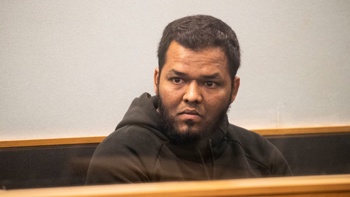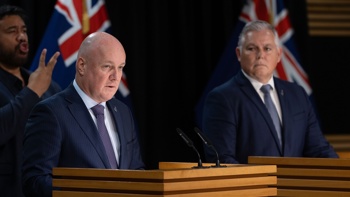North Korea said Monday it has conducted submarine-launched cruise missile tests, days after its leader Kim Jong Un ordered his troops to be ready to repel its rivals’ “frantic war preparation moves”.
The test on Sunday came a day before the US and South Korean militaries begin large-scale joint military drills that North Korea views as a rehearsal for invasion.
North Korea’s official news outlet, the Korean Central News Agency, said Monday that the missile launches showed the North’s resolve to respond with “overwhelming powerful forces” to the intensifying military manoeuvres by the “the US imperialists and the South Korean puppet forces”.
KCNA also implied that the North aims to arm the cruise missiles tested with nuclear warheads.
/cloudfront-ap-southeast-2.images.arcpublishing.com/nzme/P3UYUJF7UZE7NPDRXQOOJGLWH4.jpg)
Protesters at a rally to oppose the planned joint military exercises between the US and South Korea, in Seoul, South Korea, Saturday, March 11, 2023. Photo / AP
It said the missiles flew for more than two hours, drawing figure-eight-shaped patterns in waters off the country’s eastern coast, and hit targets 1500 km away. The missiles were fired from the 8.24 Yongung ship, KCNA said, referencing a submarine that North Korea has used to conduct all its known submarine-launched ballistic missile tests since 2016.
Sunday’s actions were the North’s first underwater-launched missile tests since the country test-fired a weapon from a silo under an inland reservoir last October. Last May, the country test-launched a short-range ballistic missile from the same vessel.
North Korea’s command of submarine-launched missile systems would make it harder for adversaries to detect launches in advance and provide the North with retaliatory attack capability. Experts say it would take years, extensive resources and major technological improvements for the heavily sanctioned nation to build several submarines that could travel quietly in seas and reliably execute strikes.
After a record number of missile tests last year, North Korea has carried out several additional rounds since January 1. Before Sunday’s launches, the country also test-fired an intercontinental ballistic missile potentially capable of reaching the mainland US; short-range, nuclear-capable missiles designed to hit South Korea; and other weapons.
- US on high alert as satellites observe North Korea moving missiles into position
- North Korea fires short-range missiles after making threats
- N Korea fires 3 missiles amid tensions over drone flights
Experts say Kim, who sees his nuclear arsenal as his best security guarantee, is trying to pressure the United States into accepting the North as a legitimate nuclear power and relax international economic sanctions.
Earlier Monday, South Korea’s military said it had detected the launch from a submarine in waters near the North’s eastern port city of Sinpo on Sunday. Sinpo has a major submarine-building shipyard.
South Korea’s Joint Chiefs of Staff said that South Korean and US intelligence authorities were analysing details of the operation.
North Korea sees regular South Korea-US military exercises as a major security threat, though the allies say their drills are defensive. Some observers say North Korea uses its rivals’ drills as a pretext to test weapons and modernise its nuclear arsenal to secure an upper hand in dealings with the United States.
Last Thursday, Kim supervised a live-fire artillery drill simulating attacks on a South Korean airfield. He ordered his military to maintain the capability to “overwhelmingly respond " to enemy actions, according to KCNA.
The news agency reported Sunday that Kim also convened a key meeting on military affairs to adopt unspecified steps to make “more effective, powerful and offensive use of the war deterrent” in light of US and South Korean manoeuvres.
South Korean-US drills are to run until March 23. They include a computer simulation called the Freedom Shield 23 and several combined field training exercises, collectively known as the Warrior Shield FTX.
The computer simulation is designed to strengthen the allies’ defence and response capabilities amid North Korea’s increasing nuclear threats and other changing security environments, according to the South Korean and US militaries.
The allies’ last large field training, called Foal Eagle, was held in 2018, the militaries said.
In past years, the US and South Korea cancelled or scaled back some drills to pursue diplomatic efforts to denuclearize North Korea out of concern about the Covid-19 pandemic. The two countries once more expanded exercises after North Korea conducted a record number of missile tests in 2022 and adopted an increasingly aggressive nuclear doctrine.
In recent weeks, the US flew powerful, long-range bombers for joint aerial drills with South Korean fighter jets. South Korea’s Defence Ministry said the deployment demonstrated the US commitment to using a full range of military capabilities, including nuclear, to defend its Asian ally in the event of an outright conflict with North Korea.
Take your Radio, Podcasts and Music with you









